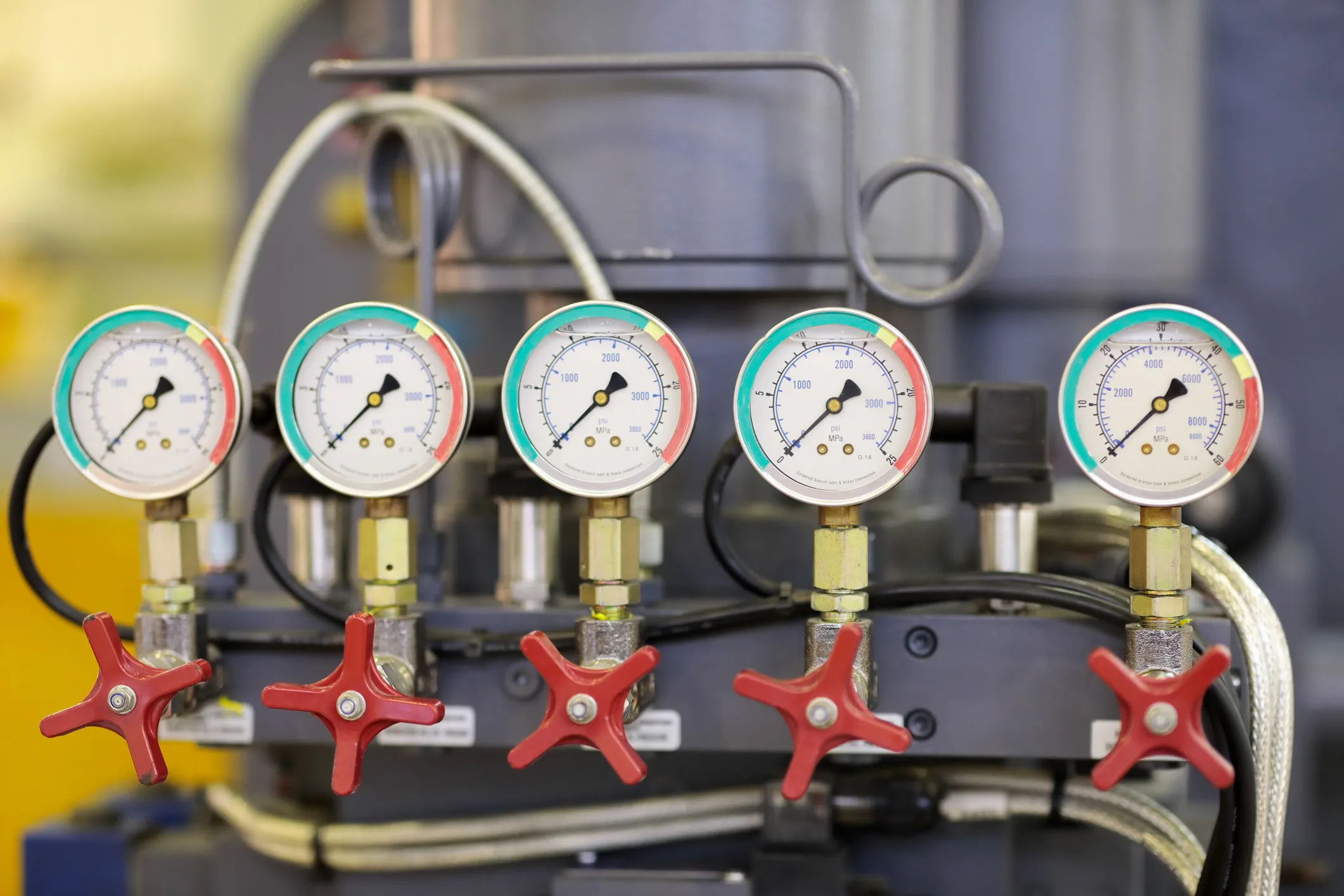ASME B40.100-2022: Pressure Gauges And Gauge Attachments

Since the 1800s, pressure gauges have been reliable, accurate, and overall crucial components of most processing systems because they are easy to read to help prevent failure in everyday operations from HVAC, aviation, healthcare, defense, and agriculture. Therefore, how a gauge is constructed and tested is extremely important for reliability, safety, and peace-of-mind. ASME B40.100-2022: Pressure Gauges And Gauge Attachments details the specifications for pressure gauges and gauge attachments.
Understanding Pressure Gauges: Function and Importance
A pressure gauge is a method of measuring fluid, gas, water, or steam intensity in a pressure powered machine to ensure there are no leaks or pressure changes that would affect the performance of the system. This tool provides the most direct way of measuring and displaying gas and liquid pressure. It can be used for troubleshooting (i.e., if leaks or block occur in the circuit, the system pressure will reduce), enabling engineers and technicians to identify the reason for that pressure drop and repair it right away. As such, the pressure gauge is one of the most commonly used pieces of equipment gas and liquid systems in refineries, electrical plants, industrial facilities, and many other industries around the world.
Which Is Better: Analog Or Digital Pressure Gauge?
Analog pressure gauges were first developed when steam processes became common in factories during the Industrial Revolution. They use a needle to indicate the pressure sensed on a dial scale. . Movement of the needle translates to variations in temperature or flow, which are easily noticed and monitored. The advantage of analog pressure gauges are that they are inexpensive and easy to use, and because they are fully made of mechanical parts, they do not require a power source to operate.
As the world began to shift into the digital age and industrial equipment advanced, the first digital pressure gauge was developed. Typically, powered by battery, loop, or solar power, digital pressure gauges use pressure transducers to display pressure readings on a digital indicator. They provide fast results with clear readability, based on the settings the user inputs before taking the measurement. As such, they are ideal for very low pressures or small incremental pressure changes that would be impossible to identify with an analog gauge.
Ultimately, the choice of which type of gauge to use comes down to the requirements of the specific application. Analogue gauges are most typically found in applications such as blower pressure, HVAC measurements, air velocity and more; whereas, digital gauge are particularly useful in situations requiring precise pressure monitoring and data management.
What Is ASME B40.100-2022?
ASME B40.100-2022 covers analog, dial-type gauges. By using elastic elements, these gauges mechanically sense pressure and indicate it by means of a pointer moving over a graduated scale. The standard defines a pressure gauge as a device that senses and indicates pressure using ambient pressure as datum. ASME B40.100-2022 also includes the following attachments installed between the pressure source and gauge(s):
- Diaphragm seals
- Snubbers
- Pressure limiting valves
Devices commonly known as snubbers, pulsation dampeners, pressure equalizers, gauge protectors, or gauge savers, are used to improve the output or readability of the instrument, and to reduce the effect of pressure surges on the instrument. The hazard potential increases at higher operating pressure and the pressure-sensing element in most gauges is subjected to high internal stresses, so these attachments are available for use in these potentially hazardous pressure systems.
What Is Gauge Pressure? Definition, Examples, and How It Works
Gauge pressure is the pressure measured in relation to ambient atmospheric pressure. Gauge pressure is positive for pressures above atmospheric pressure; it is negative for pressures below it. The most common pressure reference is a gauge pressure dial, which is signified by a ‘g’ after the pressure unit (e.g., 30 psig). Changes in the atmospheric pressure due to weather conditions or altitude directly influence the output of a gauge pressure sensor. A gauge pressure higher than ambient pressure is referred to as positive pressure.
ASME B40.100-2022 | Pressure Gauge Design and Construction
The standard specifies many various specifications and requirements during the construction of pressure gauges, such as:
- Cases may be fabricated from various materials using various manufacturing processes. They may have solid fronts or open fronts and may or may not employ various case pressure relief means.
- Dials shall indicate the units [international system of units (SI); meter, kilogram-force, second, ampere (MKSA); and customary (inch, pound-force, second, ampere)] in which the scale is graduated.
- The recommended graduated Scale Arc is 270 degrees, although special applications and ranges may require scale arcs greater or less than 270 degrees.
- Graduations shall not extend beyond the calibrated portion of the scale.
- The Pointer shall rotate clockwise for increasing positive pressure and counterclockwise for increasing negative pressure
- The tip of the Pointer shall cover 10% to 90% of the minor graduation. The pointer may overlap the graduations.
- Before the installation of a pressure gauge, consideration should be given to environmental conditions such as temperature, humidity, vibration, pulsation, and shock and the possible need for protective attachments, maintenance, and/or special installation requirements.
- Pressure gauges shall be subjected to Salt Spray Tests in accordance with ASTM B117.






